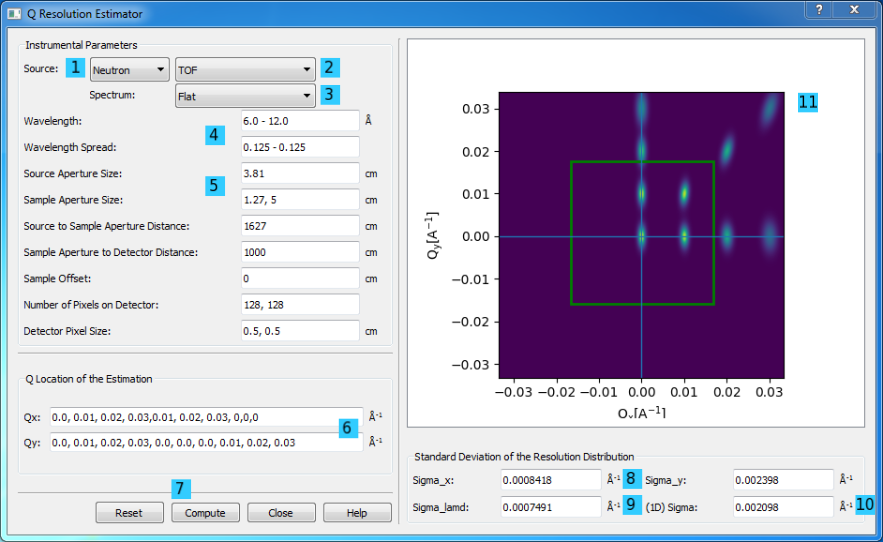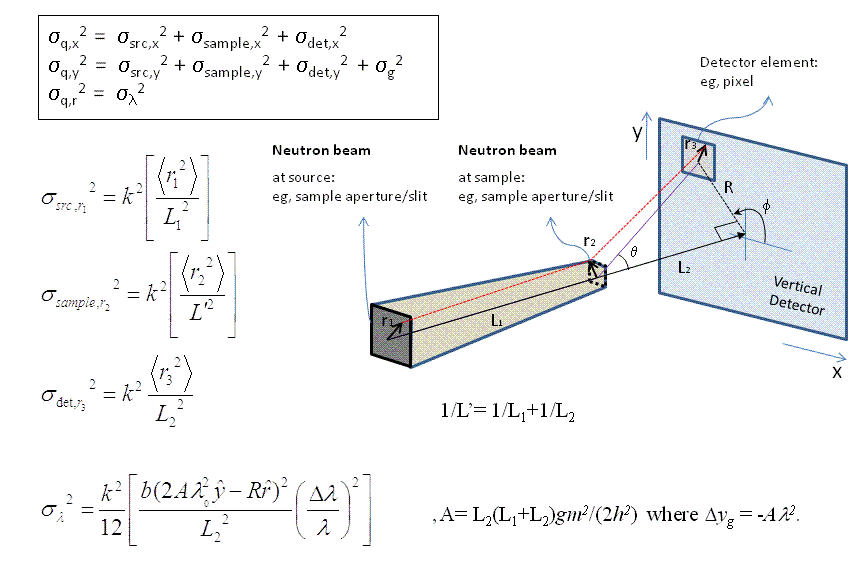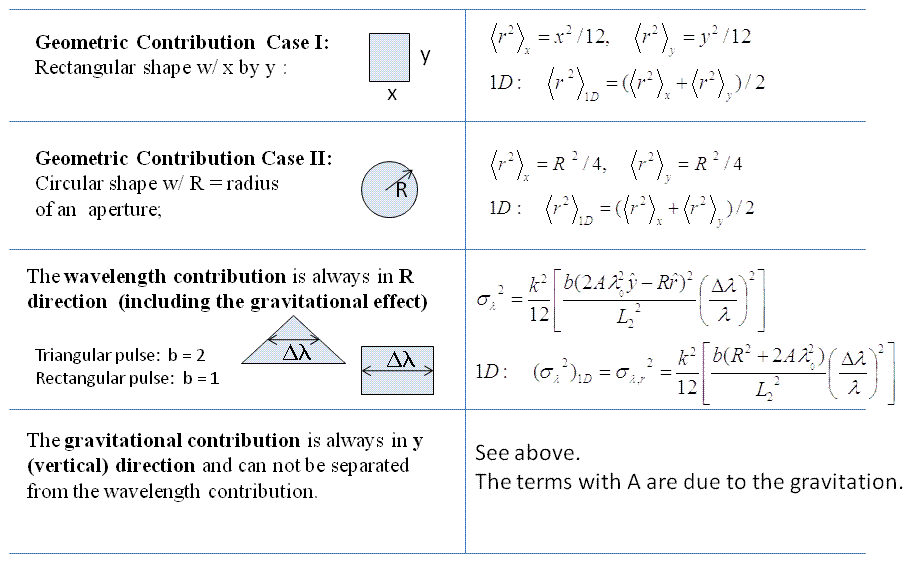Q Resolution Estimator Tool
Description
This tool approximately estimates the resolution of Q from SAS instrumental parameter values assuming that the detector is flat and normal to the incident beam.
Using the tool
Select Q Resolution Estimator from the Tool menu on the SasView toolbar.
Select the source and source type (Monochromatic or TOF).
NOTE! The computational difference between the sources is only the gravitational contribution due to the mass of the particles.
Change the default values of the instrumental parameters as required. Be careful to note that distances are specified in cm!
Enter values for the source wavelength(s), λ, and its spread (= FWHM/λ).
For monochromatic sources, the inputs are just one value. For TOF sources, the minimum and maximum values should be separated by a ‘-‘ to specify a range.
Optionally, the wavelength (BUT NOT the wavelength spread) can be extended by adding ‘; nn’ where the ‘nn’ specifies the number of the bins for the numerical integration. The default value is nn = 10. The same number of bins will be used for the corresponding wavelength spread.
For TOF, the default wavelength spectrum is flat. A custom spectral distribution file (2-column text: wavelength (Å) vs Intensity) can also be loaded by selecting Add new in the combo box.
When ready, click the Compute button. Depending on the computation the calculation time will vary.
1D and 2D dQ values will be displayed at the bottom of the panel, and a 2D resolution weight distribution (a 2D elliptical Gaussian function) will also be displayed in the plot panel.
TOF only: green lines indicate the limits of the maximum Q range accessible for the longest wavelength due to the size of the detector.
Note that the effect from the beam block/stop is ignored. So, in the small Q region near the beam block/stop
[i.e., $Q < (2 pi cdot text{beam block diameter}) / (text{sample-to-detector distance} cdot lambda_text{min})$]
the variance is slightly under estimated.
A summary of the calculation is written to the SasView Console at the bottom of the main SasView window, below the plot.

- Define the source. Select Photon for X-ray. This selection only affects the gravitational contribution of the resolution
- Select between Monochromatic or TOF
- For TOF, there is the option of loading a custom spectral distribution using Add New in the combo box
- Wavelength and wavelength spread: one value for Monochromatic, minimum and maximum of range for TOF
- For Source and Sample Size Aperture, one value for a circular aperture (diameter) and two values separated by a comma (,) for a rectangular slit (side lengths)
- One value for one (Qx, Qy) location or more values separated by a comma (,) for more locations. Note: the :math:Qx, :math:Qy input boxes should have the same number of values.
- Click on Compute button to start the calculation
- Sigma_x and Sigma_y are the components of the 2D dQ at the last (Qx, Qy) point of inputs
- Sigma_lamd is the 2D dQλ at the last point of inputs. Note: :math:dQλ has only the Qr directional component
- (1D Sigma) is the 1D dQ at the last (Qx, Qy) point of inputs
- Plot of the result. For TOF, a green rectangle marks the limits of maximum Q range accessible for the longest wavelength due to the size of the detector.
Theory
The scattering wave transfer vector is by definition

In the small-angle limit, the variance of Q is to a first-order approximation

The geometric and gravitational contributions can then be summarised as

Finally, a Gaussian function is used to describe the 2D weighting distribution of the uncertainty in Q.
References
D.F.R. Mildner and J.M. Carpenter J. Appl. Cryst. 17 (1984) 249-256
D.F.R. Mildner, J.M. Carpenter and D.L. Worcester J. Appl. Cryst. 19 (1986) 311-319
Note
This help document was last changed by Steve King, 01May2015